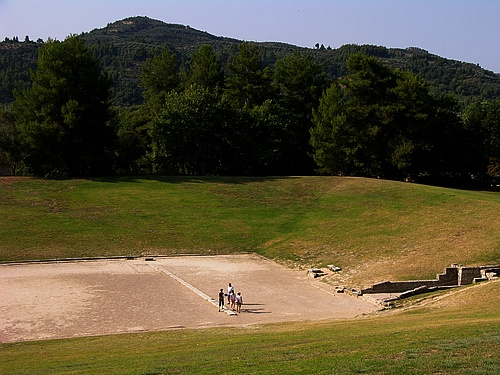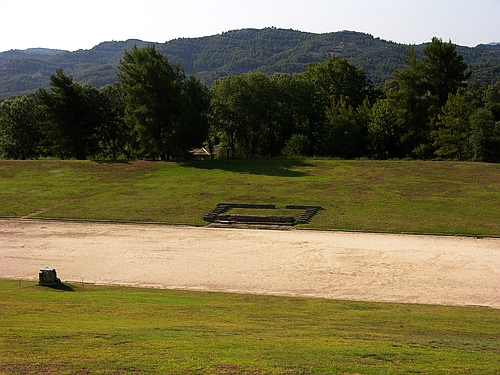GREECE
 PELOPONNESE
PELOPONNESE
 ELEIA
ELEIA
 OLYMPIA
OLYMPIA
 SANCTUARY
SANCTUARY
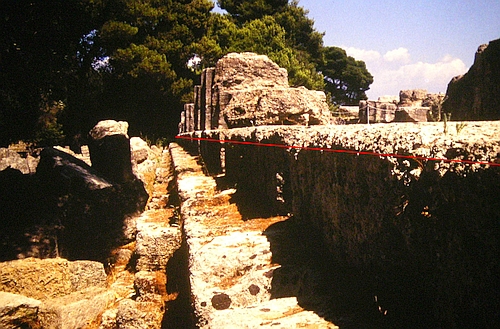
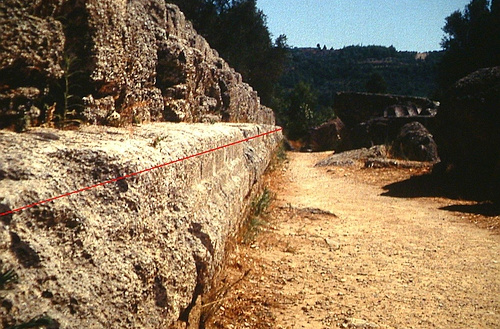
Above: crepidoma of the temple of Zeus. It has been noted that there is no evidence of "optical corrections" like on the Parthenon. To the contrary I find a clear evidence of a curvature of the stylobate on the longer North side (above left) and on the shorter West side (above right).
Below: Originally, the temple had 6 columns at either end and 13 at the sides. They were made of shell-limestone and were then covered with fine white stucco to give the appearance of marble. One of the columns was carefully reconstructed, but drums of the old columns lie as they were thrown by the earthquake of the 6th century AD, especially on the South side.
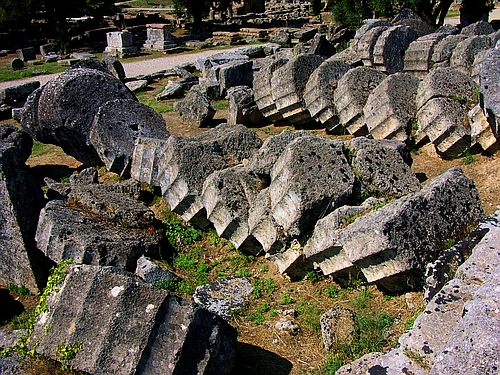
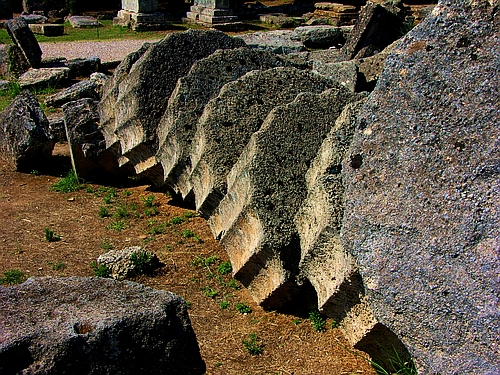
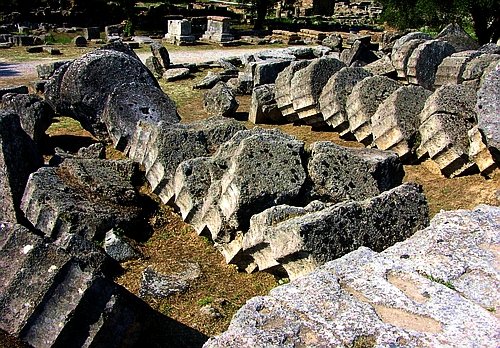
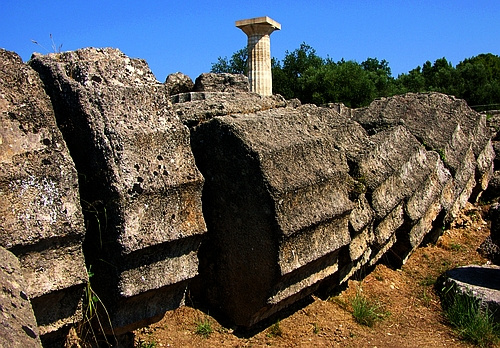
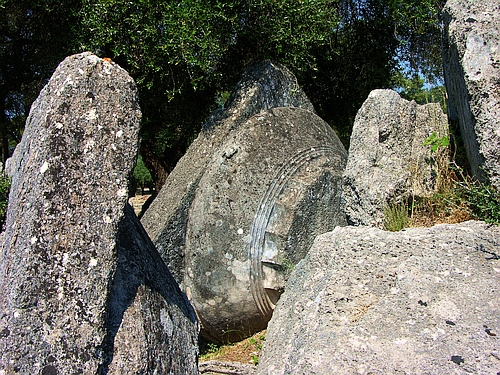
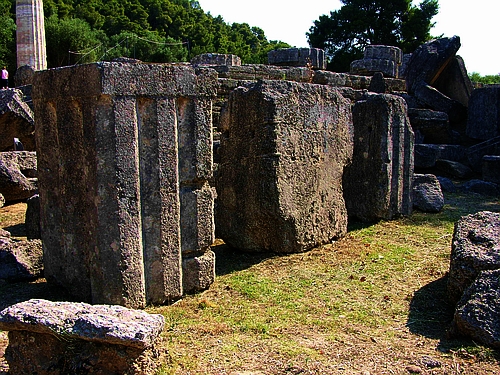
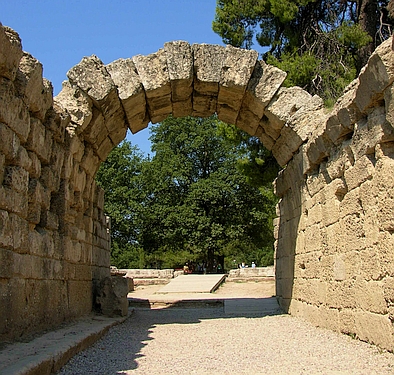
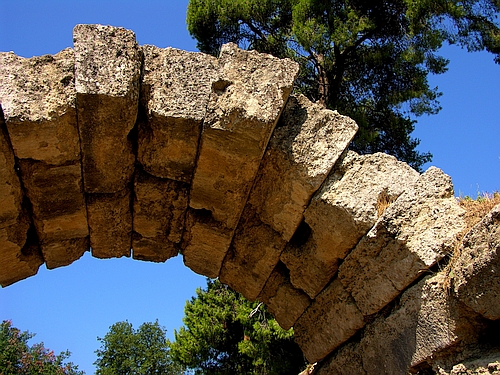
Above: The stadium in its present form with vaulted entrance dates from the early 5th century BC. - Below left: the entrance to the stadium and the starting line. - Below right: view from the stadium to the entrance.
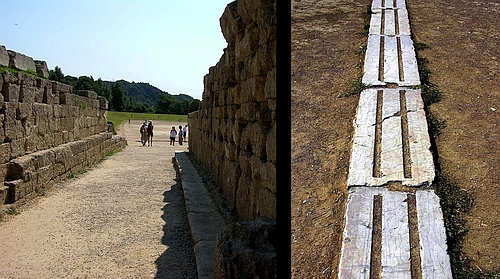
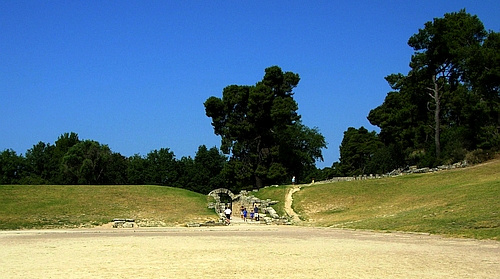
Below left: looking down to the entrance and the starting line of the stadium. - Below right: on the stadium's southern slope there was a stone platform for the Hellanodikes, the judges. It probably only served ceremonial purposes since neither start nor finish can adequately be seen from here. Its fundaments are still to be seen as well as the altar to Demeter Chamyne on the opposite side. Apart from that, the artificial banks never had permanent seats, but could accomodate 40.000 spectators.
